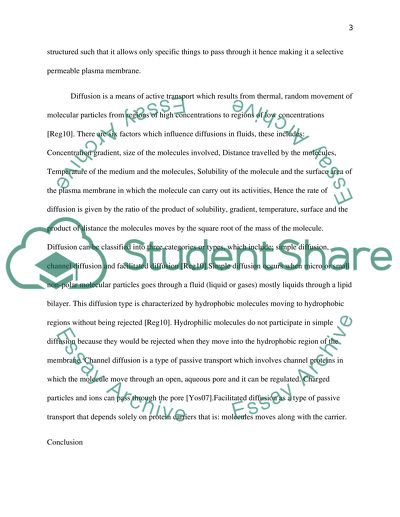Plasma Membrane and Diffusion Case Study Example | Topics and Well Written Essays - 750 words. Retrieved from https://studentshare.org/biology/1471701-diffusion-in-plasma-membrane
Plasma Membrane and Diffusion Case Study Example | Topics and Well Written Essays - 750 Words. https://studentshare.org/biology/1471701-diffusion-in-plasma-membrane.


